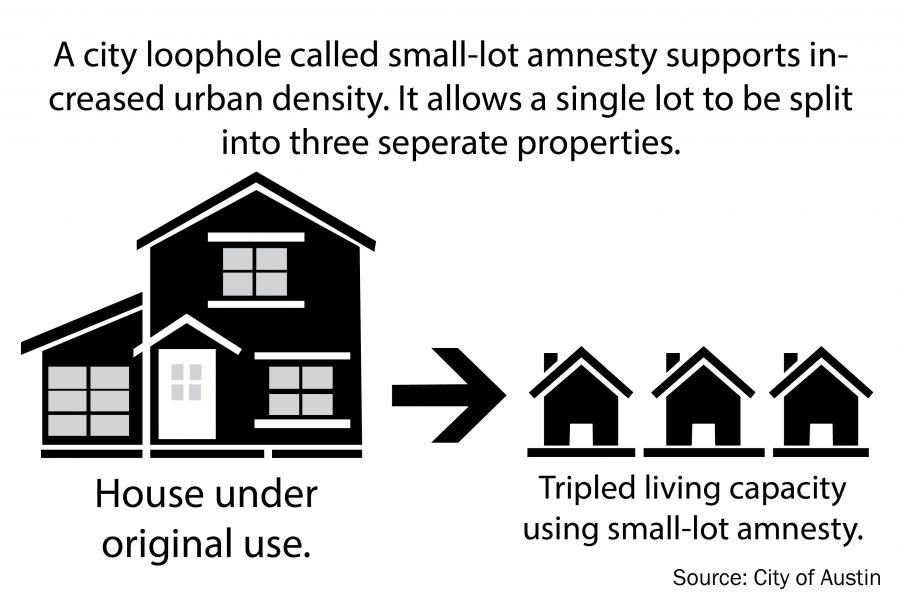People say everything is bigger in Texas, and the size of our neighborhoods proves it. Texas’s residential areas epitomize the concept of suburban living, but as the population of Austin continues to grow, we should embrace the beauty and benefits of increased urban density.
Austin’s current minimum lot size for single-family homes is 5,750 square feet. However, some builders are capitalizing on a loophole known as “small lot amnesty” to build homes on lots under the city’s current minimum. Last week, city council members voted 6–5 on a proposed amendment to close this loophole. If the amendment passes a third read, building on small lots will no longer be possible. But given the benefits of increased urban density, small-lot amnesty should stay.
Austin’s metropolitan population is projected to increase to about 5.2 million by 2050, assuming the population continues to grow at the same rate as 2000-10. Under small-lot amnesty, a builder can replace a house sitting on three lots with three new homes, effectively tripling an area’s population density. Across a variety of metrics, this type of increased urban density will benefit the rapidly growing city.
Jim Robertson, manager of Austin’s Urban Design Division, said denser urban areas are cheaper for cities to serve because less infrastructure can serve a greater amount of people.
“It’s very expensive to build and maintain a sprawling infrastructure system,” Robertson said. “All the roads and wastewater systems are very expensive. It’s much less expensive to build and maintain a compact system.”
On a different economic scale, compact homes can help ease Austin’s growing problem of gentrification — the displacement of low-income groups by more affluent ones. In the North Loop neighborhood, for example, homes built using small-lot amnesty sold in the $400,000s, compared to the area’s average of $672,817, according to an article by the Austin American-Statesman. It makes sense for smaller homes to be more affordable; offering more of them will make highly demanded areas accessible for lower-income individuals.
Economic benefits are just one of the advantages of increased urban density. If the distance between residential areas, schools and workplaces shrinks, individuals will have the opportunity to opt out of driving a car — a decision with direct benefits for the environment and human health.
“The more compact a development is, the more there may be opportunities for trips to be done by something other than getting in a car,” Robertson said.
Transportation accounts for 27 percent of all greenhouse gas emissions in the United States, according to 2013 data from the Environmental Protection Agency. As this is the second largest source of greenhouse gas emissions, decreasing reliance on automobiles will help Austin lower its impact on global climate change.
Furthermore, decreased reliance on automobiles will also decrease rates of obesity. Closer proximity between where people live and where they work or learn promotes physical activity through walking or biking, mitigating the effects of a sedentary lifestyle. With the adult obesity rate in Texas at 31.9 percent, urban density should be welcomed as a way to reduce it.
Although the city’s opposition to small-lot amnesty does not necessarily come from a lack of interest in increased urban density, the city should work with supporters of the tool instead of totally shutting them down. Austin will have to find space for its growing population, and using small-lot amnesty is a way to do it.
Chan is a journalism freshman from Sugar Land. Chan is a senior columnist. Follow him on Twitter @BenroyChan.





















